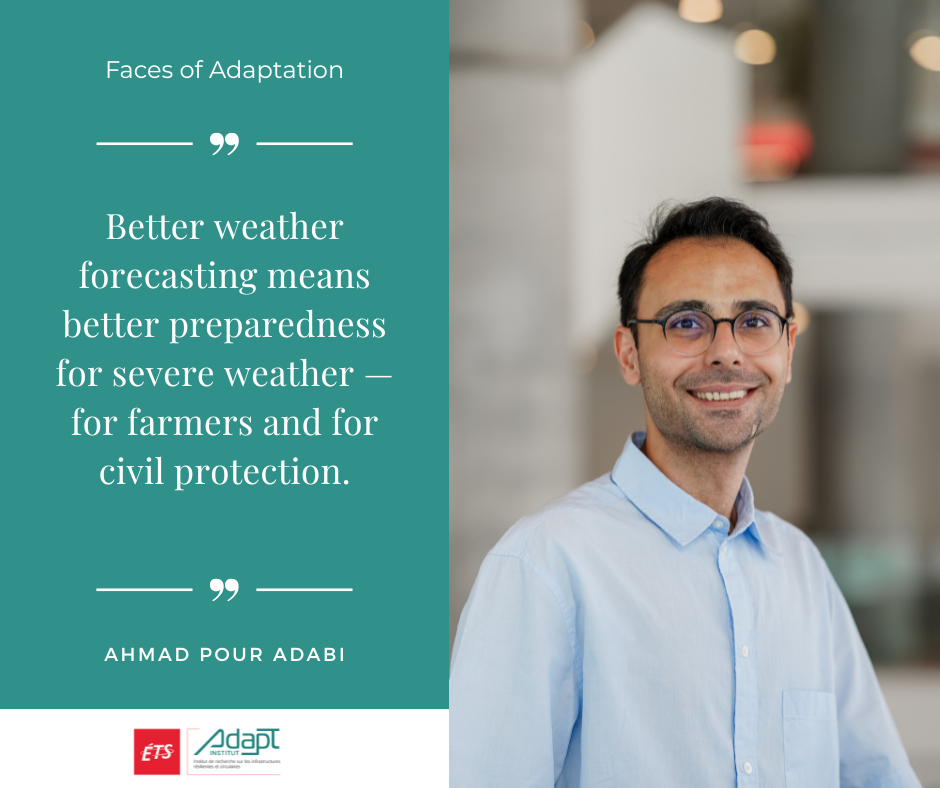Telecommunication to Improve Weather Alerts

Ahmad Pouradabi is one of the recipients of a $20,000 scholarship awarded by the Institute for Research on Resilient and Circular Infrastructure at ÉTS in Montreal. His PhD research focuses on improving weather alerts through telecommunication innovation.
What issue motivated you to invest in this research project?
I’ve always been concerned about climate change and its consequences on human activity. I think of certain weather phenomena like wildfires, floods, and tornadoes, which we sometimes see coming, but which can also occur unexpectedly and cause massive damage.
I want to propose a solution that could make a difference for communities by helping them be better prepared and adapt to these phenomena.
What solution are you proposing?
Since I have experience and knowledge in telecommunications, I had the idea of using that to combine detection, collection, and transmission tools for weather data.
I’d like to find a way to improve weather forecasting and help in improving weather alerts by making data collection more efficient.
How will you achieve that?
We’ll study existing systems and see how they can be improved. Already, some wireless sensors allow for greater accuracy in data collection. The scientific literature shows promising results.
Next, everything needs to be integrated into next-generation networks, which will be better at collecting, storing, and transmitting large amounts of data and can help improve predictability and thus better preparedness for weather phenomena.
I also plan to work with meteorologists to improve predictive modeling.
What is unique about your project?
What’s different about our project is that, for the first time, we want data collection and transmission to happen in the same place, within the same system. That hasn’t been studied before.
I predict that a unified system will also lead to cost savings when implementing the technology.
What benefits will society and governments gain from your innovation?
With access to more accurate real-time data — because it will be automatically transmitted at the moment of collection — the organizations using this tool will be better able to anticipate weather events and prepare accordingly.
In agriculture, it could help protect crops from bad weather, limiting losses for producers.
From a civil safety perspective, it could give authorities more time to warn citizens to seek shelter in case of a tornado or flood, for example. It could help save lives.
